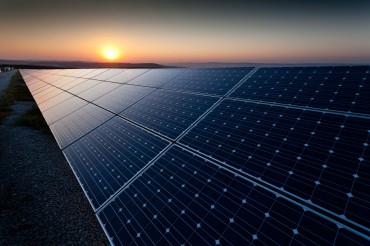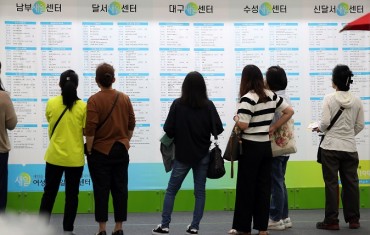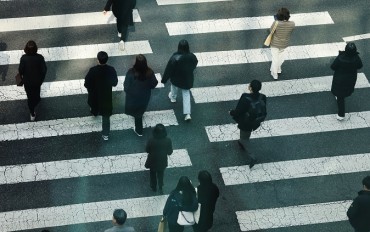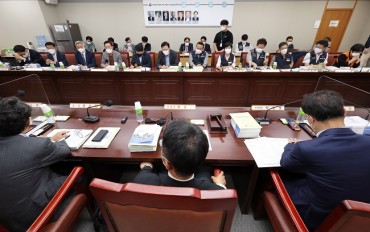
Health workers prepare for COVID-19 vaccine injections at the National Medical Center in central Seoul on March 20, 2021. (Yonhap)
SEOUL, March 20 (Korea Bizwire) — South Korea’s daily new coronavirus cases stayed in the 400s for a fourth day on Saturday, with continued sporadic clusters in the greater Seoul area adding to concerns over a resurgence in cases as more people go out during the weekend.
The country reported 452 more COVID-19 cases, including 440 local infections, raising the total caseload to 98,209, the Korea Disease Control and Prevention Agency (KDCA) said.
The country added three more deaths from COVID-19, increasing the total to 1,693.
The daily caseload was slightly lower from 463 on Friday. After rising up to the 600s in February, the figure had stabilized to as low as the 300s recently.
Daily new virus cases fell to the 300s on Monday and Tuesday on fewer tests over the weekend, but they rebounded to the 400s on Wednesday.
As of 9 p.m. Saturday, health authorities and local governments reported 392 more COVID-19 cases, which was eight more than at the same time on Friday.
Daily new cases are counted until midnight and then announced the following morning.
Despite extended preventive quarantine measures, clusters infections have shown no signs of letting up in the densely populated greater Seoul area, which is home to roughly half of the country’s 52 million population.
The government earlier announced it will maintain virus curb measures that were set to expire on March 14 for another two weeks until March 28 to contain the virus’s spread.
The greater Seoul area has been under the current Level 2 social distancing measures, the third highest in the five-tier curbs, since February. The measures include attendance caps at schools, religious activities and sports events.
In addition to the preventive measures, health authorities are expected to step up the AstraZeneca COVID-19 vaccine rollout as planned following the European Medicine Agency’s (EMA) announcement that there is no evidence suggesting a correlation between the vaccines and blood clots found in some recipients.
The use of the vaccine has been suspended in more than a dozen European countries, including Germany, France and Italy, after reports of blood clots in people who received AstraZeneca products.
Two suspected cases of blood clots in South Korea have been reported after vaccination.
Regarding the case of a man in his 20s who suffered from blood clots after receiving the AstraZeneca vaccine, health authorities suspect “cerebral venous sinus thrombosis,” a medical condition that the EMA said it will further look into.
Officials, however, stressed that the government is not considering changing its vaccination plan at the moment and will proceed with the plans set for the second quarter.

Health workers conduct a drive-thru test for the new coronavirus at a public parking lot in Sokcho, Gangwon Province, on March 19, 2021. (Yonhap)
A total of 675,426 people, including 15,132 the previous day, have been given COVID-19 vaccine shots. This accounts for around 1.3 percent of the country’s population and 84.4 percent of those who are advised to be vaccinated by the end of March.
AstraZeneca’s vaccine accounted for 618,852, while Pfizer’s took up 56,574. Starting Saturday, the government began a second round of shots for those who were inoculated with Pfizer vaccines.
The second round of shots for AstraZeneca vaccines is expected to begin in late April.
There were 30 cases of people testing positive for COVID-19 after being vaccinated, health authorities noted, saying they likely contracted the virus before the vaccine went into effect in their immune systems.
More than 40 percent of these cases occurred within one week of inoculation.
Under the country’s vaccination program that started on Feb. 26, a total of 12 million people will be vaccinated by the end of June. Foreigners also will be inoculated under the program.
The country aims to achieve herd immunity by November.
A total of 9,757 cases of side effects after vaccinations have been reported, including 150 new cases. All but one of the 150 cases were mild.
A total of 16 deaths after vaccinations have been reported, with no additional deaths reported the previous day, according to the KDCA.
Of the 440 locally transmitted cases, 119 came from Seoul and 187 were reported from Gyeonggi Province that surrounds the capital. Incheon, 40 kilometers west of Seoul, reported 11 more cases.
The three areas that make up the greater Seoul area accounted for 72 percent of all locally transmitted cases.
Sporadic clusters were reported in the metropolitan area, such as 16 cases linked to a pediatric hospital in Yongin, Gyeonggi Province, and 16 linked to an adult entertainment facility in Yangpyeong, Gyeonggi Province.
Six new cases were identified in relation to a livestock market in Anseong, Gyeonggi Province, raising the related number of cases to 133.
Outside of Seoul, the biggest number of cases was identified in South Gyeongsang Province. A cluster tracing to a bathhouse in Jinju saw five new cases, raising the total to 204.
Cases linked to an adult entertainment facility in Geoje also continued to rise as shipbuilding factory workers were found to have visited the affected venue, further spreading the disease in the community.
Investigators are looking into the infection routes of some 25.3 percent of new cases that occurred in the past two weeks.
The number of imported cases came to 12, down from 22 the previous day. Four of them were confirmed to be positive during quarantine procedures at airports and ports.
By nationality, four of them were Korean and eight were foreigners. The imported cases came from 10 countries, including Japan, Uzbekistan, France and the United States.
The number of patients with serious symptoms across the country reached 102, up from 101 the previous day.
The total number of people released from quarantine after making full recoveries moved up 426 to 89,949.
(Yonhap)






